Climbing the Entire Chain of Command: Notable Veteran Presidents
October 12, 2024
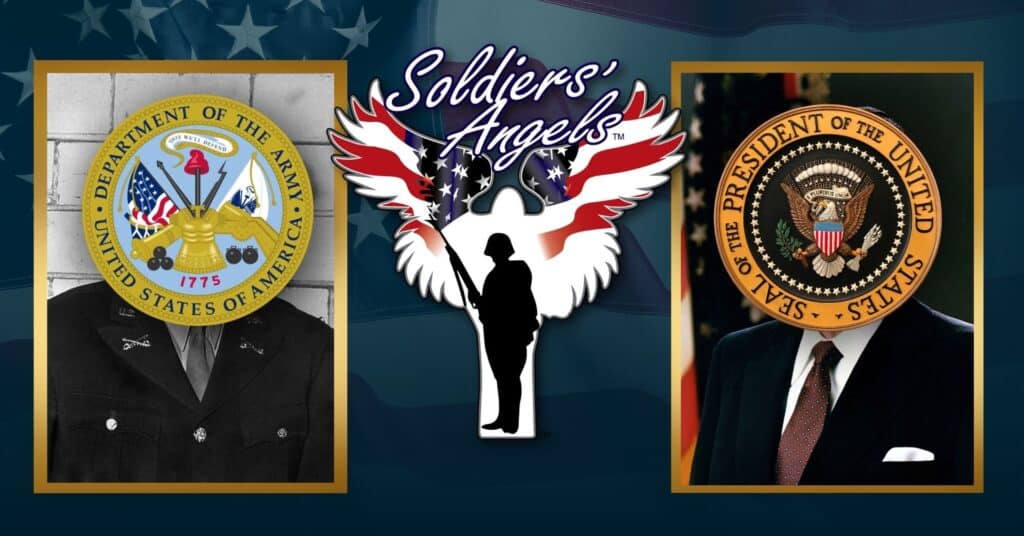
Throughout American history, many U.S. Presidents have worn the dual mantle of military leader and Commander-in-Chief. A total of 31 to be exact. From the Revolutionary War to modern-day conflicts, these presidents not only guided the nation from the Oval Office but also served in uniform, often during pivotal moments of national crisis. Their military experiences shaped their leadership styles, policies, and approaches to governance, offering unique insights into the relationship between military service and political leadership. In this blog, we’ll explore some of the most notable U.S. Presidents who served in the military, highlighting how their service influenced their presidency and the course of American history.
George Washington
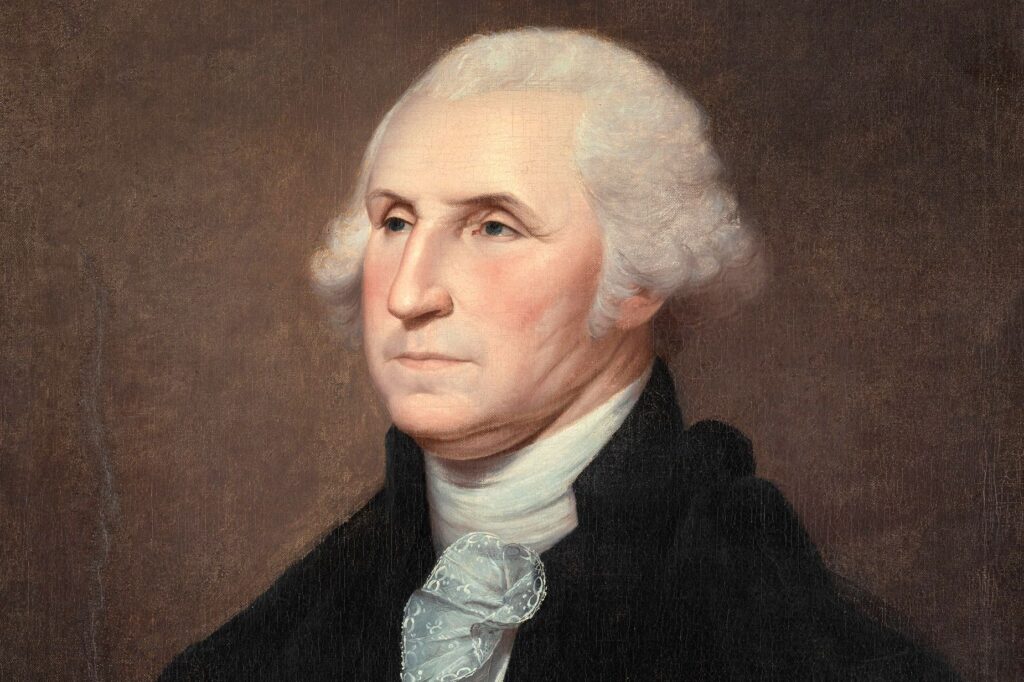
Of Course we had to start this list with the original patriot and president, George Washington. His military service was instrumental in shaping his legacy as a founding father of the United States. He first gained experience during the French and Indian War, where he served as a young officer in the Virginia militia. However, his most notable role came during the American Revolutionary War, when he was appointed Commander-in-Chief of the Continental Army. Washington’s leadership and perseverance through difficult campaigns, including the harsh winter at Valley Forge, helped secure American independence from Britain. His military success and reputation for integrity eventually led to his unanimous election as the nation’s first president.
A few interesting facts about our first president:
- Washington loved parties and was an excellent dancer.
- Washington was mostly self-educated.
- He was unanimously elected president, twice.
Click Here to read more interesting facts about George Washington
Dwight D. Eisenhower
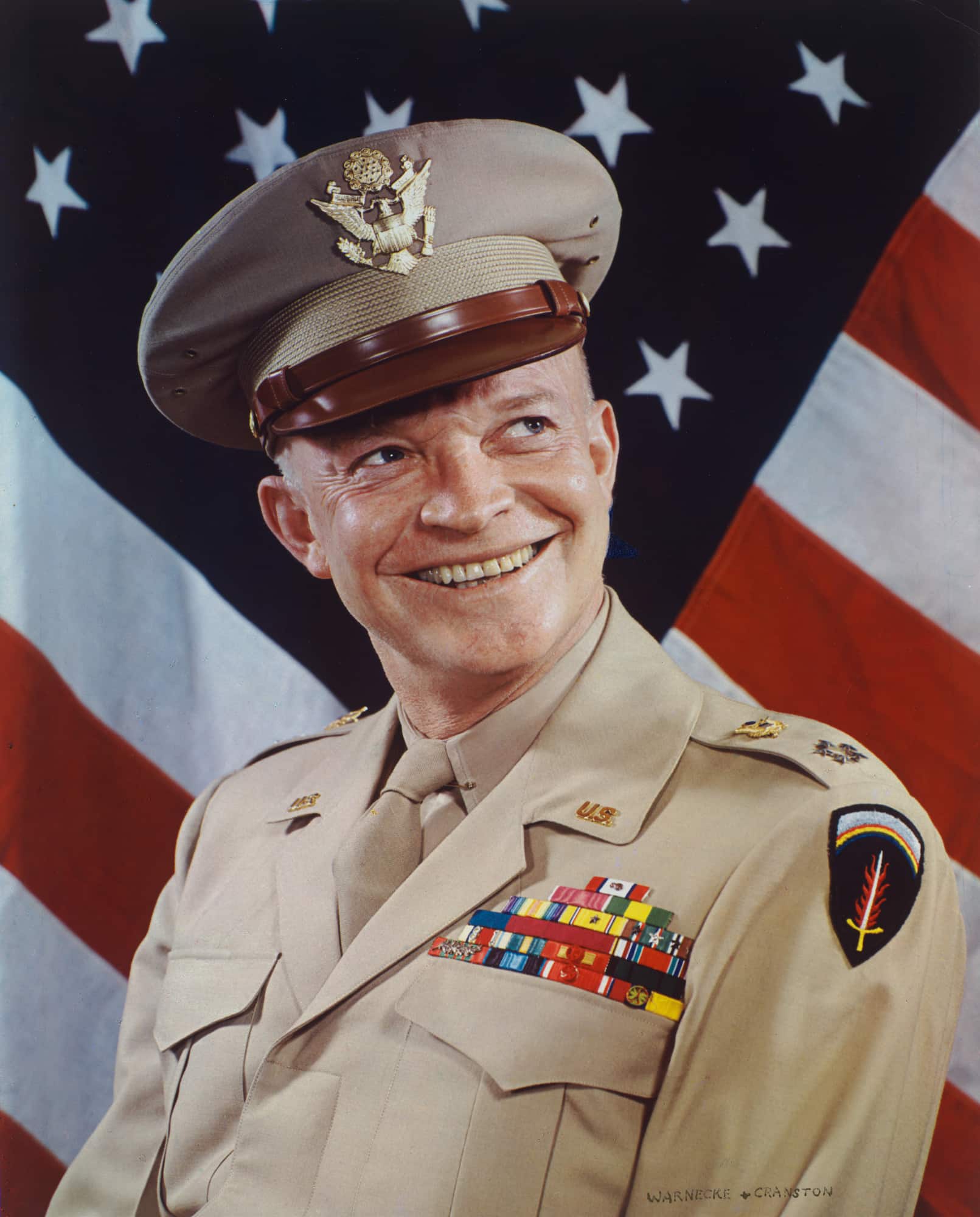
Dwight D. Eisenhower’s military service played a defining role in both his career and the trajectory of world history. Rising through the ranks of the U.S. Army, Eisenhower became a five-star general during World War II and served as the Supreme Allied Commander in Europe. He was responsible for planning and executing Operation Overlord, the successful D-Day invasion of Normandy that turned the tide of the war against Nazi Germany. His calm, strategic leadership earned him widespread respect and admiration, both at home and abroad. This military success, combined with his diplomatic skills, paved the way for his election as the 34th President of the United States.
Eisenhower was elected as the 34th President of the United States and ran from January 20, 1953 – January 20, 1961. Some of his most notable moments during his presidency include the expansion of U.S. infrastructure by championing the creation of the Interstate Highway System, overseeing the end of the Korean War, and signing the Civil Rights Act of 1957, the first civil rights legislation since Reconstruction, and sent federal troops to enforce desegregation in Little Rock, Arkansas, marking early progress in the Civil Rights Movement.
Interesting facts about our 34th President:
- Eisenhower banished the White House’s squirrels because they were ruining his putting green.
- Eisenhower was an avid painter in his later years.
- He was the first president to ride in a helicopter.
For more interesting facts about President Dwight D. Eisenhower, click here.
Ronald Reagan
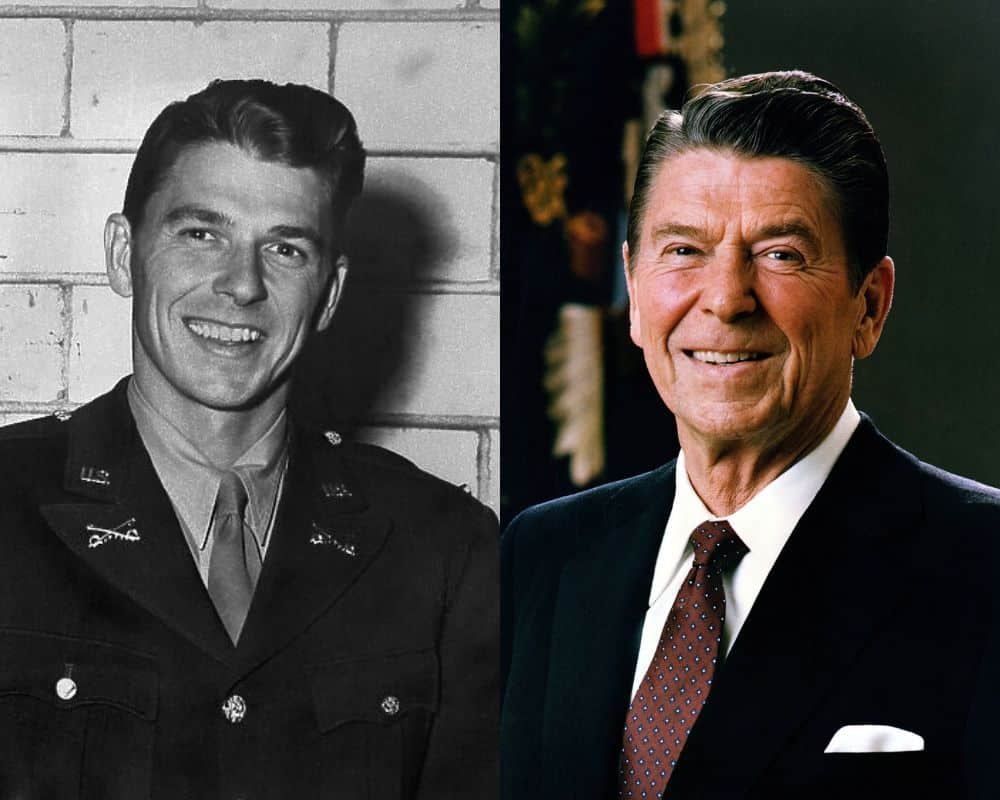
Ronald Reagan’s military service began during World War II when he was commissioned as a second lieutenant in the U.S. Army Reserve. Due to his nearsightedness, Reagan was assigned to the Army Air Forces’ First Motion Picture Unit, where he worked on training and propaganda films for the war effort. His work primarily involved using his acting background to support morale and training initiatives rather than combat service. Reagan’s time in the military helped him hone his communication and leadership skills, which he later carried into his political career. While his service was largely behind the scenes, it still contributed to the overall war effort and showcased his dedication to the country.
During his presidency from January 20, 1981 – January 20, 1989, Ronald Reagan implemented significant economic policies known as “Reaganomics,” which focused on tax cuts, deregulation, and reducing government spending to stimulate economic growth. He played a crucial role in ending the Cold War by promoting a strong military presence and engaging in strategic negotiations with Soviet leader Mikhail Gorbachev, ultimately leading to arms reduction agreements. Reagan also championed conservative social policies, including advocating for a reduction in the size of government and emphasizing traditional family values, which reshaped the Republican Party’s platform for years to come.
Interesting facts about President Ronald Reagan:
- Ronald Reagan was the first person elected as President to have been divorced.
- Young Ronald Reagan was successful as an actor and football player at Eureka College.
- Young Ronald Reagan saved an estimated 77 lives in his summers as a lifeguard.
For more interesting facts about Ronald Reagan, Click here.
Theodore Roosevelt
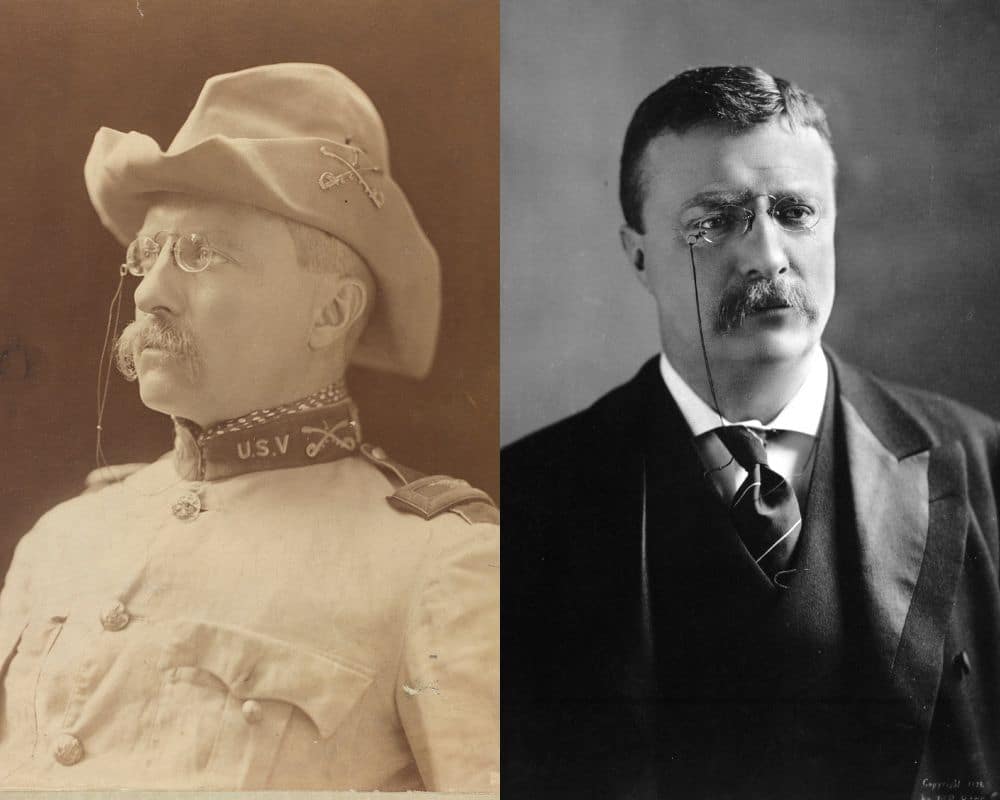
Theodore Roosevelt’s military service is best remembered for his role as a leader of the Rough Riders during the Spanish-American War. Eager to fight for American interests, he resigned from his position as Assistant Secretary of the Navy to organize a cavalry regiment, which became famous for its charge up San Juan Hill in Cuba. Roosevelt’s bravery and dynamic leadership on the battlefield earned him national fame and solidified his reputation as a rugged and charismatic leader. His military experience profoundly influenced his approach to governance, instilling in him a sense of vigor and decisiveness. Ultimately, Roosevelt’s service not only contributed to a decisive victory for the United States but also paved the way for his election as the 26th President.
During his presidency, Theodore Roosevelt championed progressive reforms, significantly advancing the conservation movement by establishing national parks, forests, and wildlife refuges to protect America’s natural resources. He also implemented the Square Deal, which aimed to ensure fair treatment for workers, consumers, and businesses, tackling monopolies and promoting antitrust laws. Additionally, Roosevelt’s foreign policy, famously characterized by the phrase “speak softly and carry a big stick,” led to increased U.S. influence in Latin America and the successful negotiation of the Panama Canal, enhancing global trade routes.
Interesting facts about Theodore Roosevelt:
- Roosevelt was the first President to win a Nobel Peace Prize.
- Theodore and Franklin Roosevelt were fifth cousins.
- Roosevelt was blind in one eye after a boxing injury in the White House.
For more interesting facts about Theodore Roosevelt, Click here.
George H. W. Bush
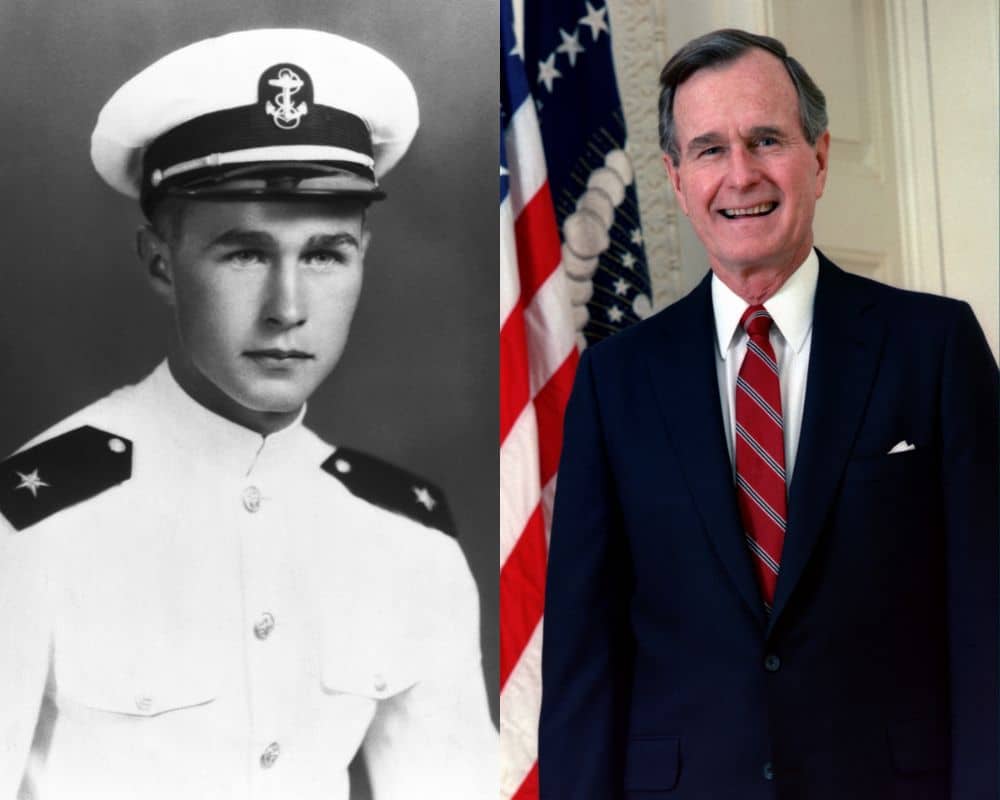
George H. W. Bush, served as a naval aviator during World War II, enlisting in the U.S. Navy at the young age of 18. He became one of the youngest pilots in the Navy and flew combat missions in the Pacific Theater, where he demonstrated bravery by successfully completing several dangerous bombing runs. During one mission, his plane was shot down, and he was rescued by a U.S. submarine, an experience that highlighted his resilience and dedication. Bush’s military service instilled in him a strong sense of patriotism and duty, which would later influence his political career and leadership style. After the war, he transitioned to a successful career in business and politics, ultimately serving as the 41st President of the United States.
George H. W. Bush was president from January 20, 1989 to January 20, 1993. During his presidency, he successfully led the United States through the end of the Cold War, fostering cooperation with Soviet leader Mikhail Gorbachev and overseeing the peaceful reunification of Germany. He also directed a decisive military response during the Gulf War, leading an international coalition to liberate Kuwait from Iraqi occupation in Operation Desert Storm. Domestically, Bush signed the Americans with Disabilities Act (ADA) into law, which provided crucial civil rights protections for individuals with disabilities.
Interesting facts about George H. W. Bush:
- Bush met Babe Ruth while playing baseball at Yale.
- Bush enlisted in the Navy the same day he graduated from high school, on his 18th birthday, in 1942.
- He flew 58 combat missions during World War II.
For more interesting fact about George H. W. Bush, click here.
Appreciating our Veterans!
As we reflect on the legacy of U.S. presidents who have served in the military, we are reminded of the deep connection between service to country and leadership. These presidents, shaped by their time in uniform, carried the values of duty, honor, and sacrifice into the highest office of the land, making decisions that would shape the future of our nation. At Soldiers’ Angels, we honor this tradition by supporting veterans as they transition from military to civilian life, recognizing that their experiences, like those of past presidents, have uniquely prepared them to be leaders in their communities. We are committed to helping them thrive, just as their service has helped our country prosper.
We provide assistance to low-income Veterans, Military Families, and Deployed service members. If you fall under any of these categories and would like to receive support, click here! If you are grateful and passionate about giving back to our nation’s heroes and would like to give back and support Veterans, Military Families, and Deployed service members, then click here.
May No Soldier Go Unloved,
May No Soldier Walk Alone,
May No Soldier Be Forgotten,
Even After They Come Home.™
All Presidents Who Served the Military:
1700-1800
1. George Washington 1775-1783
General and Commander-in-Chief, U.S. Continental Army
2. Thomas Jefferson 1770-1779
Colonel, Virginia Militia
3. James Madison 1775-1781
Colonel, Virginia Militia
4. James Monroe 1775-1778
Major, Continental Army
1800-1900
5. Andrew Jackson 1814-1821
Major General, U.S. Army
6. William Henry Harrison 1812-1814
Major General, Kentucky Militia
7. John Tyler 1812
Captain, Virginia Militia
8. James K. Polk 1821
Colonel, Tennessee Militia
9. Zachary Taylor 1805-1815, 1816-1849
Major General, U.S. Army
10. Millard Fillmore 1861
Major, Union Continentals
11. Franklin Pierce 1846-1848
Brigadier General, New Hampshire Militia
12. James Buchanan 1814
Private, Pennsylvania Militia
13. Abraham Lincoln 1832
Captain, Illinois Militia
14. Andrew Johnson 1862-1865
Brigadier General, U.S. Army
15. Ulysses S. Grant 1866-1869
General, U.S. Army
16. Rutherford B. Hayes 1861-1865
Major General, U.S. Army
17. James A. Garfield 1861-1863
Major General, U.S. Army
18. Chester A. Arthur 1858-1863
Brigadier General, New York Militia
19. Benjamin Harrison 1862-1865
Brevet Brigadier General, U.S. Army
20. William McKinley 1861-1865
Brevet Major, U.S. Army
21. Theodore Roosevelt 1898
Colonel, U.S. Army
1900-2021
22. Harry S. Truman 1919-1945
Colonel, Army Officer Reserve Corps
23. Dwight D. Eisenhower 1915-1948, 1951-1952
General of the Army, U.S. Army
24. John F. Kennedy 1941-1945
Lieutenant, U.S. Naval Reserve
25. Lyndon B. Johnson 1940-1964
Commander, U.S. Naval Reserve
26. Richard M. Nixon 1942-1966
Commander, U.S. Naval Reserve
27. Gerald R. Ford, Jr. 1942-1946
Lieutenant Commander, U.S. Naval Reserve
28. Jimmy Carter 1946-1953
Lieutenant, U.S. Navy
29. Ronald Reagan 1942-1945
Captain, U.S. Army
30. George H.W. Bush 1942-1945
Lieutenant JG, U.S. Navy
31. George W. Bush 1968-1973
First Lieutenant, Texas Air National Guard


